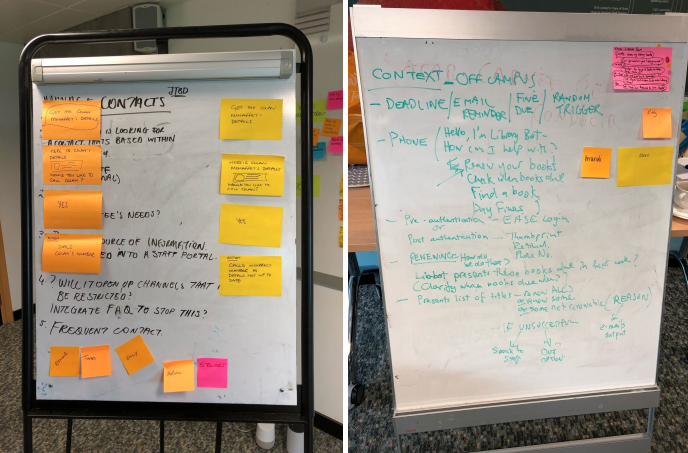Conversational interfaces at the University of Edinburgh
Most technology horizon reports these days seem to have a common reference: Conversational interfaces. Whether a chatbot, a voice assistant or any other machine-learning driven interface, this appears to be the next frontier in audience engagement. To reflect on this, and how these would be useful in a Higher Education environment, we ran a project last year focussing in voice interaction design and standards. It was an interesting journey, with very interesting outputs which are available for all University colleagues.
The main objective of this project was to explore and learn how websites can be designed or adapted for voice search. An additional aim was to develop an experimental application for either the Amazon Alexa or Google Home devices. During our research, it was quickly evident that the conversational interface environment is a bit of a grey area. Most people are excited by the technology, fewer are actively using it and even less have actually made genuine progress in integrating with their web services.
First think, then implement
To address this challenge, we took a step back. Apart from looking at the conversational technology landscape, we started exploring potential standards and guidance. As always, it’s all about understanding the problem and designing the right solution, rather than jumping into coding right away.
Our focus was not only to understand what is available, but to offer this insight back to the University community. This has now been achieved by publishing the findings in a series of wiki pages, which are split in four areas:
- Architecture of Conversational Interfaces [EASE log-in required]
Focuses on how to build a Conversational Interface, from the ground up: Define the Business Logic, Design and Test the Conversational Flow, Build the Natural Language Understanding and, finally Deliver a Text or Voice Interface.
- Evaluating Use Cases [EASE log-in required]
Defines a model to evaluate potential use cases to assist when making a decision to build a Conversational Interface, based on 5 questions:
- Does it fit the users?
- Will it be useful?
- Does it fit our systems?
- Can we make it good?
- Are these conversations important?
- Higher Education Use Cases [EASE log-in required]
Lists a set of HE use cases around the areas of: Student Entry, Student Support, Student Admin, Staff Admin, Learning Support and Classroom Support. Furthermore, has a list of prototype conversations in video format.
- Conversational Technology Landscape [EASE log-in required]
Finally, a look into the current technology landscape exploring the most popular Natural Language, Conversational, Chatbot and Voice platforms.
Whether interesting in building your own chatbot or Alexa skill, I would like to invite you to have a look. They are a really useful and interesting resource, which we will aim to keep up to date.
Conversational Interfaces Workshop
To test this guidance, and to engage with interested University colleagues, we ran a full day workshop at the end of August. The agenda did cover an introduction to Conversational Interfaces and their place in Higher Education. The next step was to evaluate the set of selected 6 use case areas, based on the existing guidance. This was achieved by using the “jobs to be done” methodology.
Jobs to be done. Where marketing meets UX – Blog post by Neil Allison

Hard thinking colleagues at the workshop, which resulted in many ideas and conversational design prototypes.
The three ideas that made it to the next stage were:
- I would hire a product to manage my deadlines (For students)
- I would hire a product to help me with my studies (For students)
- I would hire a product to manage my contacts (For Staff)
After lunch time, the attendees were split in groups and asked to design conversations based on the selected use cases. Finally, these ideas were turned into prototypes. All of the teams had a chance to present their ideas back to the wider group.
Overall, it was a very productive day. It was very energising seeing people in action, focussing on the problems and design potential solutions. Post-workshop, the feedback was really positive. Attendees thought that stepping back from coding was a great idea, and helped them put thinking about Conversational Interfaces in perspective.
Really appreciated and enjoyed the pace and tone of the presentation. As someone who works in the tech space it is always nice to see new educated perspectives on design.
Conversational Interfaces Workshop attendee
Currently, we ‘re looking into ways on how we can follow up on this project. This, potentially, would include development of a prototype solution using on of our use cases.


